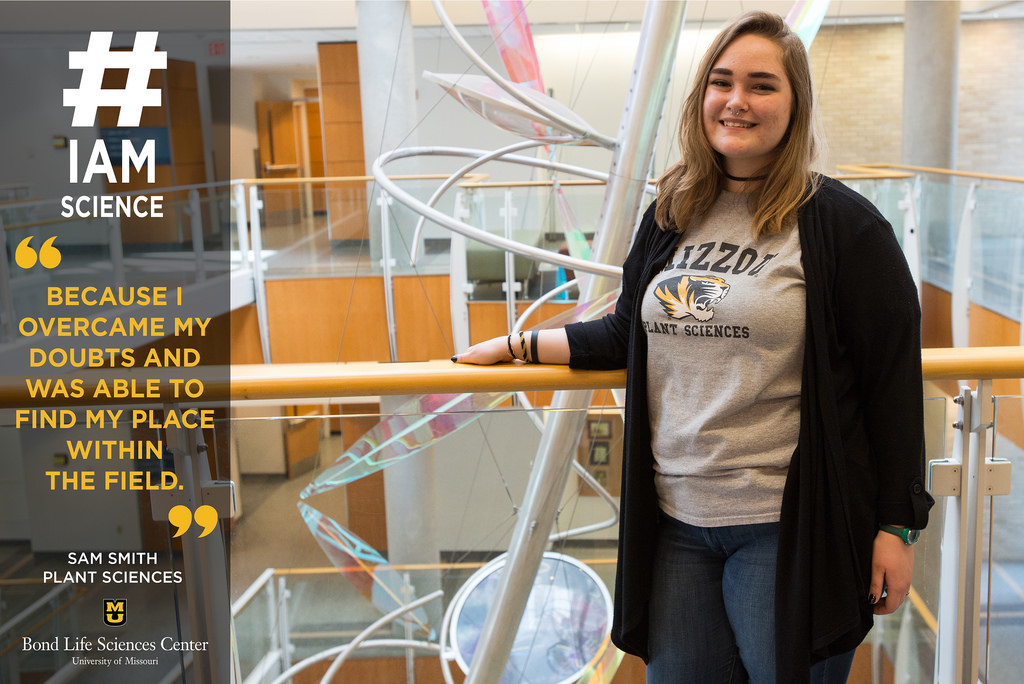Published on

Sam Smith, a freshman plant sciences major, works in Walter Gassmann’s lab in Bond LSC. | Photo by Allison Scott, Bond LSC
“#IAmScience because I overcame my doubts and was able to find my place within the field.”
By Allison Scott | Bond Life Sciences Center
It’s no secret that science is intimidating. The test tubes, white coats and field-specific jargon paint a picture of a field that’s difficult — sometimes too difficult for some people to imagine themselves being in.
Sam Smith, a freshman studying plant sciences through the Freshman Research in Plant Science (FRIPS) program, knows this feeling all too well. She grew up in Bethalto, Illinois, a municipal village that’s about half an hour outside of St. Louis.
“I thought science was cool, but I didn’t feel like I had any space in it,” Smith said.
That is until she figured out exactly where she fit, leading her to join Walter Gassmann’s lab at Bond LSC and having Chris Garner as her mentor.
“I interviewed with Chris, and it just clicked,” Smith said. “He’s the best mentor, and we have a lot of fun in a professional setting.”
Right now, Smith works with Arabidopsis thaliana to better understand the immune response of plants.
“Chris is supervising me while I work on a project where I’m trying to find a triple mutant to see if it has any impact on the immune response of Arabidopsis,” Smith said. “The goal is to understand immunity regulation because we need to understand how plants are reacting.”
Plant immune responses are important because they can help scientists like Smith to better protect the plant from disease.
“If I find the mutant, I’ll take ribonucleic acid (RNA) out to measure the genetic expression of the immune response,” Smith said. “The more it’s being expressed, the more immune response there is.”
And that will lay the foundation for future applications with other plants.
Being a freshman, Smith acknowledges the impact of FRIPS and research on her experience thus far.
“It has already opened doors for me,” Smith said. “I’ve made relationships with other scientists and grown from working within such a collaborative community.”
For the future, Smith plans on continuing her research throughout her undergraduate career. However, she would love to see more students pursue research because it’s not as challenging to get started in as it might initially appear.
“Anyone can do science,” Smith said. “You just have to take the chance because you can learn so much. It isn’t as scary as you think, I promise.”